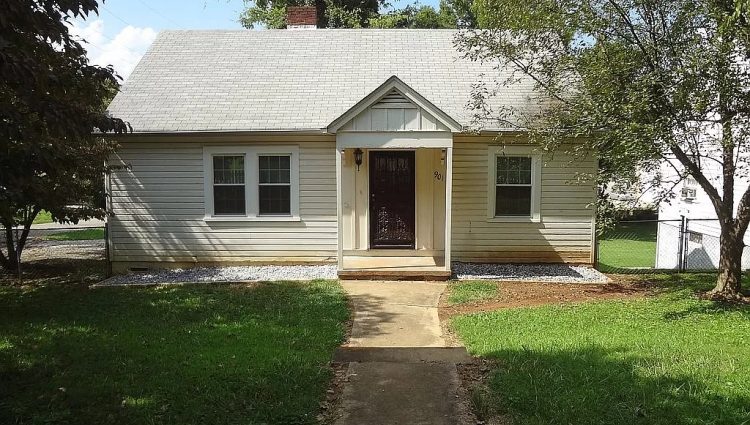I.
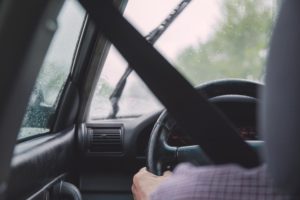
An August shower pours through the forest. Rainwater still drips from rattling leaves as a glowing mist shines fair in the morning light. The sun is just again peeking through the leafy boughs. Beaming rays illuminate the water-quenched dance of the soft, green canopy. Droplets bead and splash to the understory from tulip-trees, yellow buckeye, black locust, sugar maple, and hemlock. The drizzle falls to the breathing organisms on the forest floor – rhododendron, fern, trillium, moss, fungi, and red-cheeked salamanders at home in the freshly damp detritus. I feel out of some past life in this hardwood forest. I feel free.
“Hey, dad? Dad!” Eli calls to me with a tame excitement in his voice.
“What’s up buddy?” I ask as I pull out a mug and open a thermos of steaming Irish tea. “Hungry for breakfast?”
“Ah. Yes! Because I want my doughnut.”
“Coming right up, Bubba. Just need to clean the picnic table right quick.”
I take a swig of my tea and grab a couple of towels out of the trusty family wagon. The August sun is back, but the warm tea is still enjoyable. The shade of our heavily wooded breakfast spot hints we are in the last weeks of summer. The boy and I have traveled to the Chimneys picnic area in the Great Smoky Mountains – a true gem. We’ve made our way to this special stretch of wood early enough to claim a picnic site right on the banks of the Little Pigeon River. Water roars and crashes into boulders as I wipe the seats and tabletop. Once dry, I pull out our cooler and unload a salami sandwich with grapes and chocolate milk for my little rascal.
“Eat your sandwich and some fruit – doughnuts are our breakfast desert.” I look at him with a half-grin as I lay out the food.
“What kind of sandwiches we having?” My boy’s eyes meet mine as he matches my grin.
“Salami grilled cheeses. Don’t worry, I only put spicy stuff on mine.”
“Yummy!” Eli celebrates as he climbs to his seat. “I love salami.”
As Eli eats and drinks his milk, I slowly chew and look to the river. We’re in a sheltered valley. All around us stand a large variety of trees and smaller plants along the boulders and soils of the forest floor. Most pronounced, I reckon, are the tulip poplar trees that tower across the ecosystem. The Chimneys Picnic Area resides in a cove hardwood forest – likely one of the most biologically diverse forests on planet Earth. Here, an estimated thirty species of trees grow. Along this picnic area, a number of these trees luckily survived the logging and clear cuts of the industrial boom. Standing small beneath these titans, I appreciate this forest of giants. I smile true again and eat with my son – I very much feel out of some strange past life. I am free.
II.
A little more than two weeks ago, Katie and I were about four miles into an urban hiking adventure on a very muggy August morning. Our goal was to stroll roughly twenty miles or so throughout the course of our day in Knoxville. We planned to stop on the patios of coffee shops, eateries, and beer gardens to re-fuel when feeling weary on such a long day; but around four miles into our journey, as I struggled along Kingston Pike into the Bearden area of town, I knew our quest was in serious jeopardy. I felt completely drained and, well, just not right. What I didn’t know, but feared, was that the novel virus was doing battle with my nervous system.
Perhaps I should have known this was on the horizon. In the preceding days, my rhythm was off. On some trail runs at the local Ijams nature center, I found myself getting light-headed moving uphill. The same feeling of light-headedness washed over me when I lifted weights. I didn’t pay this much mind at the time, because when I took a moment or two to simply breathe, I felt just fine again. I chalked the feelings up to staying up too late, getting up too early, and the slow weight gain I’d experienced as the months at home rolled on. This particular day though, I’d a feeling I wouldn’t bounce back – and I felt terrible about it.
Early August found us roughly five months into the pandemic. Just like many folks, I suppose, we were getting into a new rhythm. Having a rhythm is a good thing – keeps us from burnout. Even still, pandemic days simply feel strange. Though I was not joyless, I don’t know if, overall, I was happy. I didn’t really have a goal for pandemic life. I’d spent my time playing ball with Eli and “wrestling” our new puppy. I prepared food and enjoyed it too much. I tried to slap words together that other folks might want to read now and then, though I must admit writing became extremely difficult. I often lounged with books and music when not wasting away on Zoom – the new office life. Exercise remained part of the daily routine. Nature walks and trail running occurred often. The family and I took some special trips into the Appalachians. I went on solo journeys or rambled around with friends, and I still tossed heavy weights around the gym. At the same time, though, I’d allowed happy hour to creep earlier and earlier into everyday life. I reckon I was feeling a little aimless. Katie, on the other hand, she sure had a goal – and I was out there trying to support her the day my Covid-19 symptoms fully kicked in.
Back in the middle of May, my wife started pounding the pavement for miles upon miles – she was chasing the buzzard. This “buzzard” was my wife’s pacer. Katie signed up for the Great Virtual Race Across Tennessee (GVRAT). GVRAT is the brainchild of the famous, perhaps infamous, cigarette smoking, neo-luddite, Gary Cantrell – better known in the running world as Lazarus Lake, or “Laz.” Laz is gruff. He is bearded, usually seen in flannel, hair is usually a mess, but he is often found with a smile on his face. I call Laz a neo-luddite because he famously hates race technology – doesn’t trust it. He’s rather opposed to GPS, fancy watches, and other gadgets. Instead, the racing organizer prefers books, maps, and person to person dialogue. I do not use this term, “neo-luddite,” in any pejorative way. I’ve got some pro-tech cred myself, but I believe the core of luddism – a philosophy that questions the role of modern technology in our lives – provides, at the very least, important questions that allow us honest skepticism and critical analysis of the world we have built and are currently building.
Philosophy aside, Laz, who lives in rural Short Creek, Tennessee, is the mastermind behind the Barkley Marathons – an ultramarathon (any race longer than 31 miles) trail race held in Frozen Head State Park near Wartburg, Tennessee. The Barkley Marathons are recognized as one of the hardest races in the ultra-running world. With the pandemic ongoing, Laz canceled the Barkley, only to invite the world on a 1,000 kilometer (621 mile) virtual race across Tennessee. Oddly enough, Tennessee is only 710 kilometers (440 miles) in length. For this pandemic run, Laz developed a rather convoluted route that began southwest of the Memphis delta and ends northeast of the mountains outside Johnson City for runners to “enjoy.”
The race began May 1st and ran until August 31st. My wife started in the middle of May, about three weeks behind the greenlight. So, Katie had some catching up to do, hence, “chasing the buzzard.” The buzzard set the pace for those who are taking all four months to complete the race. Once the buzzard was caught, Katie could calm down a bit on her daily miles and coast to the finish line.
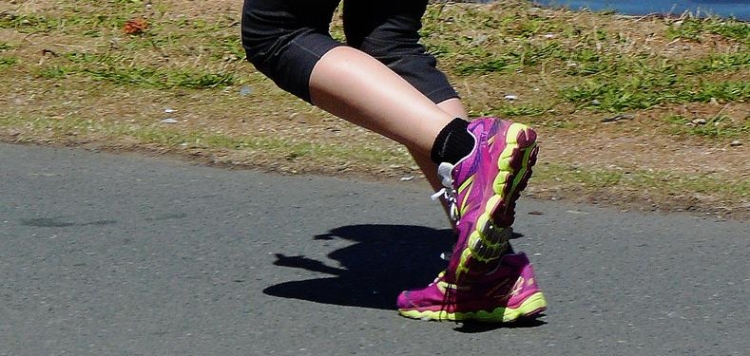
Katie found a lot of joy in this race. The news was becoming meaner and more perplexing as these months rolled on. Social media was full, more so than usual, of folks being absolutely terrible to one another. In this race, though, Katie found something to do every day that took her mind off the world around her. Our dear friend Casey participated in this race as well, so they often walked with each other. Further, as a sociologist, Katie really came to appreciate the racing community. A global social media page was opened, and folks from all over the world shared pictures from their neck of the woods – be they in Tennessee, Ireland, Iceland, or anywhere – as people completed the miles. Encouragement and stories of persistence abounded – my wife had found joy in the community.
Our early August date day, the “great walking extravaganza,” started as planned. Eli crashed with his grandparents the night before so we could get out bright and early for our urban hike. We left our decaying south Knoxville rental around 7:30 in the morning. The sky was bright blue and clear, save for some heavily pillowed clouds here and there. The morning seemed golden, sparkling in dew and alive in a vibrant summer green. We crossed the Gay Street Bridge to downtown.

Church bells chimed and accented a warm breeze in a city still too eerie, quiet, and empty since the winter days that changed our world. I was happy along the train tracks, among the old brick and mortar of the University of Tennessee – our old college stomping grounds – as we made our way toward the riverfront. Knoxville really is a great city. I was excited to walk across my town because of how great these streets and neighborhoods are. I’ll never be able to describe Knoxville better than James Weir, a traveler just passing through Knoxville in 1798, who penned some famous words in a journal which are now bronzed into a boulder on proud display in Volunteer Landing Park on the banks of the Tennessee River:
In the infant town of Knox, the houses are irregular and interspersed. It was county court day when I came. I saw jesting, singing, swearing, women yelling from doorways . . . whiskey and peach brandy were cheap. The town was confused with a promiscuous throng of every denomination — blanket-clad Indians, leather-shirted woodsmen, gamblers, hard-eyed and vigilant. I stood aghast. My soul shrank back to hear the horrid oaths and dreadful indignities offered to the supreme governor of the universe. There was what I never did see before on Sunday, dancing, singing, and playing of cards.
It was said by a gentleman of the neighborhood that the devil is grown so old that it renders him incapable of traveling and that he has taken up in Knoxville and there hopes to spend the remaining part of his days . . . as he believes he is among friends.
Hell yeah; I love this town.
I felt good early on the walk, totally normal. As the morning hours gave way to noon, though, my body started to ache, and I felt tired. By the time we’d traversed the Tennessee River Walk near the university, to the Third Creek Greenway in the Bearden area, I felt heavy, foggy, and, well, just plain weird. Katie noticed my disposition and asked how I was feeling.
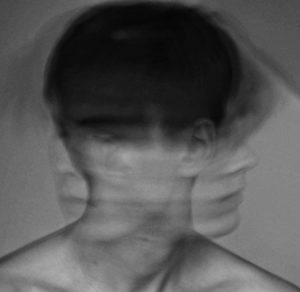
“I don’t know how to describe it,” I informed my wife, as a steady stream of sweat poured from my body, saturating my shirt. I’d pause to breathe, place my hands on my hips, and lower my head only to watch perspiration flow freely off the tip of my nose to splash onto the ground like a leaking garden hose. Red in the face, I moaned, “My head doesn’t feel right, and I am getting really tired. I’ve never felt this way before.”
“Okay, we are about one mile away from the Bearden Beer Market,” Katie noted in an assuring tone, “let’s get you there for a rest.”
The sun was hot. The world burned white like a furnace. The humidity and heat together seemed to slow down time. I was chugging water, but no matter how much I drank, my mouth stayed gummy, my throat thirsting for more. I felt heavy air against my sweaty clothes, my skin was sticky. I moved slowly with an odd sensation, like I was floating in my mind while all of Earth’s gravity was pulling me down to her burning core. I felt heat quiver off the pavement. I felt all of the car exhaust that passed us; hot winds rolled through the poplars and oak who did little in terms of shade, and I couldn’t help but notice the land seemingly evaporate as the sun, stern in starry conviction, poured an awful light across this scruffy city.
When we reached the beer market, I sat in the garden while Katie grabbed a couple of beers. Even in some shade, all I could feel was a blazing hot. August was burning so bright it hurt to even keep my eyes open.
“How are you feeling?” Katie inquired as she placed a beer in front of me. I looked to her, squinting, with a wry smile. She gasped, “Grant, your eyes are totally bloodshot.”
“Damn, I must be falling apart.”
“We can take a quicker route home or call a ride.”
“No, no, Monkey,” I replied, in a confused denial, lifting my beer, “I want to do this today. I just need a break.”
I took a pull of the lite-ale and shivered. The beer was refreshing enough, slightly hoppy and smooth. Yet, the single sip crashed like a sack of quarters in my stomach. Well, this was proof something was obviously wrong. The aches, sweating, fatigue, brain fog was all one thing, but not drinking beer? We sat in the garden for thirty minutes or so. I desperately wanted to recover and get moving again, but I felt as if I’d melted into the chair. Katie poured out my beer and we headed back home.
We arrived at the house shortly after two or so in the afternoon. I sat down in my chair, inquired about a movie to watch and then – lights out. I woke up well into the night, yet still felt exhausted. Katie was on the couch next to me, and after some small talk she gave me a bit of bad news. A friend we’d had over a couple of times in the last two weeks had called to let her know she had Covid-19. We were all at risk. Luckily, Katie still felt fine. She’d left to pick up Eli once she heard the news. He was apparently in good spirits as I slept the day away and was himself slumbering peacefully in his room.
I spent the next day, a Sunday, occupying my morning hours with phone calls. I was hoping for a minute clinic, or an emergency room, some damn place, somewhere, in the United States of America, to get a Covid test. I spent hours calling healthcare facilities just to be told that tests were in short supply. I’d need a doctor’s order for the nose swab. Defeated, frustrated, and downright pissed off as my deep, rattling cough developed, I simply felt exhausted. Again, I slept most of the day away.
I called our primary care physician first thing that Monday morning for the order. Since Katie and Eli were free of symptoms, I slept away from both of them. We took separate cars to the testing center. The ride from South Knox to the testing center was long and boring. Big gray clouds had gathered in the sky. Somewhere out there, thunder rolled.
We parked next to each other in front of the bricked healthcare facility and rolled down our windows. The air was humid, but the breeze from the coming storm calmed the heat. I made faces at Eli, shared looks with Katie as we waited. A nurse, dressed in blue scrubs, masked, and with face shield approached our vehicles. We all masked up to go through the formalities and then came the test. Katie was first. We didn’t have Eli swabbed. After the test, Katie left with a quick goodbye to get our kiddo home.
My turn. The swab itself was indeed long and traveled far into the nostril. A slight burning sensation came over my sinuses as the back of my throat was tickled, and I mustered a little bit of willpower not to sneeze or cough. I’d heard horror stories about the test, but, to be honest, this wasn’t all that bad in the grand scheme of things.
“All done,” said the nurse as she turned toward the door.
Before she left, I lobbed an inquiry, “How long until the results come in?”
“You should receive a call from your PCP’s office within thirty minutes or so.”
The nurse then turned toward the building to gather more tests. A few more cars pulled in on this early Monday morning, signaling another busy day for healthcare workers. As I rolled up my window, the wind noticeably intensified, and the first fat drops of water started splashing across the parking lot.
Shortly after arriving home, some twenty minutes later, as a summer storm dropped buckets across the city, my phone rang. Katie and I share the same personal care provider, so she gave us both our results over the phone as loud peals of rain pounded atop the house. Katie tested negative, but, sure enough, our quarantine officially began – I was positive.
III.
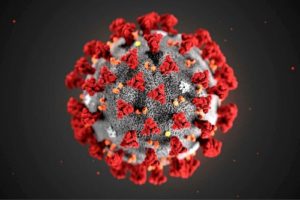
Covid-19 is a disease caused by a coronavirus. Coronaviruses are a large family of viruses that usually cause mild to moderate upper-respiratory tract illnesses, including the common cold. Coronaviruses get their name from surface proteins that appear like a halo or crown. The scientists who came up with the term “coronavirus” in 1968, thought the virus they observed under a microscope resembled a solar corona: the bright crown-like ring of gasses surrounding the sun that is visible during a solar eclipse. These viruses are RNA viruses, meaning they have RNA, as opposed to DNA, as their genetic material. RNA viruses replicate quickly and are more likely to mutate. This family causes disease in mammals and birds. Notably, three new coronaviruses have emerged from animal reservoirs over the past two decades. All three can cause serious illness and are responsible for widespread death.
First, in November of 2002, a Severe Acute Respiratory Syndrome Coronavirus (SARS-CoV) epidemic broke out across twenty-nine different countries – impacting farmers, food vendors, and chefs in China’s Guangdong Province. Then came the Middle East Respiratory Syndrome Coronavirus (MERS-CoV) in September of 2012. Through 2019, worldwide, according to the World Health Organization, nearly 2,500 cases of MERS-CoV infection (with at least 850 related deaths) were reported from 27 countries. The origins of the virus are not fully understood, but according to analysis of different virus genomes, it is believed that MERS may have originated in bats and was transmitted to camels sometime in the distant past. The human population picked up the virus from sick camels. This history gets us to today’s pandemic.
Today’s Severe Acute Respiratory Disease Syndrome Coronavirus 2 (SARS-CoV 2) likely entered the world stage with animal origin in December of 2019 – though scientists have still not totally ruled out a lab-based origin. That said, there is no credible evidence that SARS-CoV-2 was ever known to virologists before it emerged in December 2019. In fact, a strong line of evidence, from scholarly publications like Nature, The Lancet, PNAS, and more, suggests that, like SARS-CoV and MERS-CoV, this virus probably evolved in a bat host until an unknown spillover event into human civilization occurred. Many early cases of COVID-19 were linked to the Huanan market in Wuhan, China. Horseshoe bats likely served as the reservoir hosts of the virus that jumped to the human population. Genomic analysis of SARS-CoV-2 indicates the virus lineage has been around for decades. As SARS-CoV-2 was first detected in Wuhan, China, far from where the horseshoe bat is found, the question remains regarding the identity of the intermediate host. This said, genomic and evolutionary analysis does demonstrate that, because of natural selection, SARS-CoV-2 is highly effective at binding to mammal proteins – including humans.
In reflection, over the past two decades, the global human population has witnessed three novel coronaviruses emerge and cause outbreaks with considerable health consternation. Further, all outbreaks (likely) have a zoonotic origin, or, diseases that spread from animals to humans. The question begs to be asked: Why?
Find out Grant’s reply this Thursday in part two of “Quarantine.”
** Featured image photographed by and courtesy of Grant Mincy. The house is his family’s former rental home.
